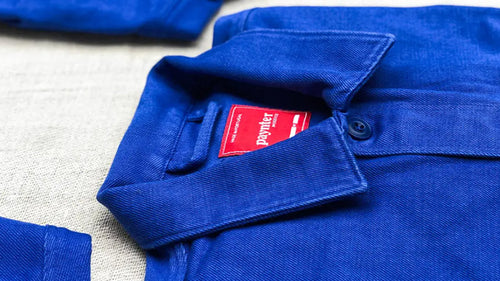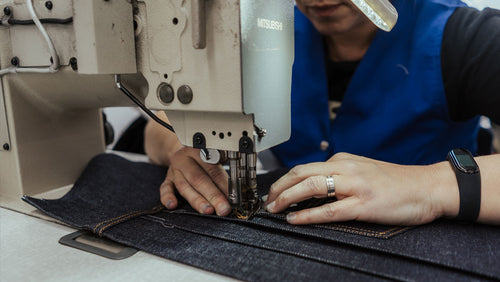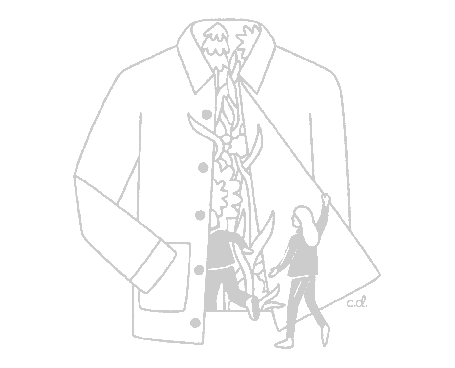Film photography by Jim Marsden.

As a small and still young company we look to those much further ahead in their journey for inspiration and guidance on how to do things the right way.
Typically, they’re the companies who have done things the long hard stupid way and built beautiful businesses in the process. Businesses that are fully led by their purpose, not their profit. Businesses that inspire by consistency, commitment and service. More often those who are quietly confident, not those who shout the loudest.
We have even more respect for the companies who’ve done this for decades, while avoiding trends, sticking to their values and consistently improving their quality and the way they do their work.
These are the companies we trust for advice and inspiration. Never loud, never boring, always relevant.
It’s the company we wish to build over the long term, and we’re very much still figuring it out. But one company who we think has achieved just this is Vitsœ (pronounced ‘vit-sue’.) And they’ve been at it for more than 60 years.

If you’re not already familiar with Vitsœ, it was started in Germany in 1959 by Dane, Niels Vitsœ. He wanted to bring to life Dieter Rams’ (now legendary) modular furniture designs, starting with the iconic 606 Universal Shelving System, following with the 620 Chair Programme and the 621 Table.
But it’s not just their furniture that’s adaptable.
Over the last sixty years, the company has changed too.
In 1995, Mark Adams, a Brit who had been working with Vitsœ since the mid 80s, saved the company from bankruptcy, became its managing director and brought the company and its production to the UK.
Fast forward to 2023 and they are thriving.
We recently visited the Vitsœ Production Building in Leamington Spa (just a one hour train north of London), for a tour with Mark Adams to go behind the curtain and learn more about the company, how they operate, and to see what small companies like ours can learn from Vitsœ.
Here are just a few of the things we learnt on our visit, with input throughout from managing director, Mark Adams.


- 1 -
BUILD A BUSINESS YOU NEVER WANT TO SELL
“There’s a painful pattern that plays out in today’s entrepreneurial-driven society. Start a company, grow it and then sell it. We have watched countless examples over the years of companies that start out with strong values, only to see that years down the line a larger beast comes along, buys them out, the company grows … and the values dissolve. The saddest part about it is that the founders always write a letter with genuine naivety that they will be able to retain their values. It never happens. For small businesses at the start of that path, we beg that more rewrite that story: decisions should be made by thinking about the long term rather than short-term gain. There are great examples of family-run companies that are thinking long term, they are thinking multi-generational rather than trying to make a quick buck. At Vitsœ we think the same way, we are making decisions for the next 60 years.”


- 2 -
SWIM AGAINST THE TIDE
Unlike the majority of their industry peers, Vitsœ haven’t had a new product release in 30 years and they don’t attend trade shows twice a year to show off their new collections either. Rather than invent new products, they focus on making their products better. There’s an awful lot for the clothing industry to learn from this point alone.
While it’s true that Vitsœ haven’t had a new product release in decades, they’ve certainly not stood still. Every piece of the screwed-not-glued kit of parts that make up their modular furniture has been improved over the past 60 years. They've worked hard to make sure a shelf made tomorrow will work perfectly on a system built decades earlier.
The Vitsœ way is the antithesis to planned obsolescence and is designed to move with you throughout your life.
“Focus on better, not on newer. Why are we obsessed with the new? We should be obsessed with better. That is what drives us at Vitsœ. After all, it is the way that the natural world operates: constantly improving, not launching new species.
Our advice? The eleventh principle for good design: single-mindedness, or bloody-mindedness. Stick to your guns. Do not be knocked off track by the constant demand: “What’s new?”

- 3 -
USE YOUR OWN PRODUCTS
As soon as you enter the Vitsœ production building you’re surrounded by their products, not just at every point through the production line, but in every way imaginable. The kitchen is built from their 606 shelving system, so too are the bathrooms, the offices, an in-house photography and videography studio, a museum, overnight acommodation and dining space used through the day by their team for breakfast, morning tea and lunch, made by in-house chef Will Leigh.
We improve our quality by interacting with our products every day and getting to know them inside out, and another benefit is that the more you use (or wear) it, it becomes more yours. With time, sentimentality grows.
Mark added “Why we admire what you have created at Paynter is because you have created a beautiful connection between your story, your trials and tribulations – and the way you make your clothes. We can learn from you.
Something that is well-made can carry a greater emotional connection, but that alone is not enough, the longer you have a product, the more sentimental value can grow, and thus your relationship towards it builds.
Your shelves could have traversed multiple houses, watched your children grow up and they will still be there with you through all of these moments. So to strengthen our relationship with objects we need to add value to them, not just monetary, but emotional value. That way people will take care of their objects. We see that happening repeatedly at Vitsœ.”

- 4 -
SERVICE IS EVERYTHING
Service is much more than you’d think. Through connecting to the people you make for, you’ll get ideas to improve your products and can send feedback directly to the people who have made them. Asking Mark about Vitsœ's approach to service, he told us:
“We are always listening to our customers. By selling 100% directly, worldwide, and through our personal planning service, we are deeply connected to our customers and by using this deep connection we are able to gather rich feedback on what we are doing well and where we can be better.
This translates into our product-development meeting where our customer ambassador, Nicholas, represents the customer in all decisions we make. As we tinker and iterate, we are looking both forward and backwards. Because our product lasts a lifetime and more*, we have to make sure that a part bought years ago is still compatible with the latest iteration. It might not look like our products have changed much over the years but there has been plenty of work going on behind the scenes to continue improving our product, always ensuring backwards-compatibility. One of the challenges we now face is improving our materials. We want to continue to improve and lower our impact on our planet. Sourcing better materials, and better methods of manufacturing: these could be changes the customer never sees. Working closely with our suppliers to understand what the latest innovations are so we can be at the forefront, to lead by example on how to make a difference."
*Wondering how a system can last a lifetime, and more? Vitsœ shelving systems have been known to be listed in wills, to be passed on and reused.


- 5 -
CREATE THE IDEAL ENVIRONMENT
Find opportunities every step along the way to improve your environment.
Take Vitsœ's production building itself. It’s made of natural materials, it’s naturally lit and ventilated, with views of the natural world outside.
The production building is a highly adaptable place. It’s ever evolving and everything is on wheels to be easily moved.
Just like their furniture, their building is modular and adaptable to suit their needs.
We love this. It reminds us of the Eames’ infamous 901 Studio in Venice, California. At one point in time it was the most creative address on the planet producing so much groundbreaking work. And yet everything was happening from a small warehouse building.
Nearly every wall and desk could be moved. One day everyone would move their desks and the building would be transformed into a film set, or a photography studio. Then the following week it would be a workshop for testing furniture. Everything was on wheels and could easily be packed away.
It's like the Swiss army knife of studios. It doesn’t need to be bigger, it just needs to be able to adapt for the ideal function.



- 6 -
WORK WITH THE BEST AND LOOK AFTER EACH OTHER
Holding yourself to the highest standards naturally means holding others to the highest standards too, both within the company and outside of it.
During the visit, Mark noticed us looking upwards at their on-site overnight accommodation and told us “the building was built with the idea of accommodating our global team in mind, creating a sense of community. We’ve had team members from Copenhagen, Munich, New York and Los Angeles all come and stay in the building at the same time. We have more regular guests from London, Bristol or south Wales. Particularly when someone joins Vitsœ for the first time, regardless of location they will come and spend a few weeks inside our building, learning from every team and meeting their new colleagues, getting under the skin of Vitsœ. Our recruitment process has continually been refined over the years. We always gather feedback from each new member of Vitsœ to learn if there are ways we can keep improving our process.”
And it’s no accident that their production building is based in Royal Leamington Spa, after all Mark says “Leamington sits within the centre of our supply chain. The majority of our components are within two hours of us. However, what that doesn’t illustrate is where our suppliers then source their materials. This is something we need to hold ourselves and others more accountable for. We are actively working with our suppliers to improve their own supply chain so that we continue to improve the impact we are having”.


- 7 -
DIRECT IS THE WAY
Selling your products directly to your customers without wholesalers or other partners in the way means you can give an undiluted experience. Vitsœ live by this mantra, but it hasn’t always been that way. We asked them if they thought more companies will sell direct going forward?
“It’s not for everyone and let’s be clear, particularly in the furniture industry, it is the harder path to go down but it can be rewarding. Selling directly means we can charge a lower, fairer price to our customers, and we are directly in touch with them to gather feedback, provide the best possible service and continue to improve.
We, too, wouldn’t change that for the world. If you want your company to provide great service and to be closely tied to your customers, then you have to work directly. It’s the only way to truly hear their voice. It’s hard to imagine that one day dealers will all disappear and everyone will sell directly but there is a strong case that more companies should.
For example, if you wanted to create a stronger emotional connection to your products that would be a good starting point. There are companies we can think of that started out directly and then, as they looked to grow faster, they began to sell through dealers. Sure the orders came in and they grew but at what expense? The quality of the product, service and therefore the emotional connection to the product diminished.
So if you want pure growth and profit, which sadly most people want, then we doubt that direct will satisfy you, but if you want to truly make a difference and build a company built on values other than profit, direct should be the way.”


- 8 -
STICK TO YOUR GUNS
Talking of direct… Back in 2011 Mark went to Berlin to tell the major group of German furniture dealers that they would no longer be able to buy Vitsœ furniture from 1 January 2013. He says “You could have heard a pin drop. With one stroke Vitsœ cut away 85 dealers. Vitsœ became smaller. But better. That demands bravery – and the renunciation of greed.”
The team don’t just plan for the next quarter or even the next 5 years. They look 60 years ahead. Imagine how you’d run a business if you thought the same way.

ONE LAST THING
We had to touch on clothing, since when we arrived for our tour all three of us were in blue shirts. Mark in a classic blue Oxford button down, Becky in a striped Oxford button down, and Huw in a chambray work shirt.
Taking Vitsœ’s thinking about the wardrobe as a kit of parts, we asked Mark about his essential pieces for longevity.
Mark - “My wardrobe is a ruthless kit of parts. Everything goes with everything. Much of it lasts 20+ years. It is repaired. Shoes from Northampton. Socks from Leicester. Shirts from the US. Polo-necks from Derbyshire. Better, not newer”.

FURTHER LEARNING:
If you'd like to learn more about Vitsœ, here are some useful links...
- Watch the Dieter Rams Documentary
- Listen to Mark Adams' Talk at Creative Mornings
- Read Dieter Rams' 'Ten Principles of Design'
- Browse Vitsœ.com




